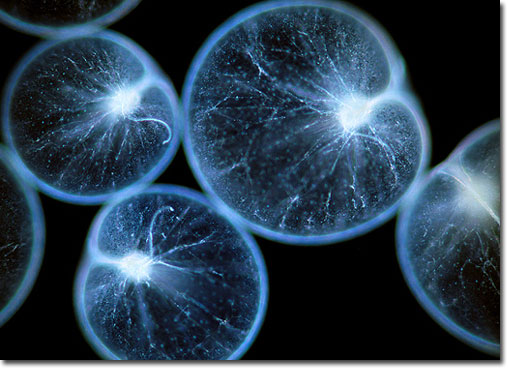|
Noctiluca scintillans is widely distributed throughout the world, occurring most often in coastal waters. Sometimes referred to as seasparkle, the organisms are often responsible for lighting up the sea, and sometimes the wet sand, at night. In large quantities, the dinoflagellates are bioluminescent, though individually they cannot produce perceptible light. The glittering phenomena produced by blooms is believed by some to be a defensive mechanism, acting as a deterrent to predators who want to avoid becoming bioluminescent themselves, an attribute that could make them more readily seen and caught by other organisms.
|
